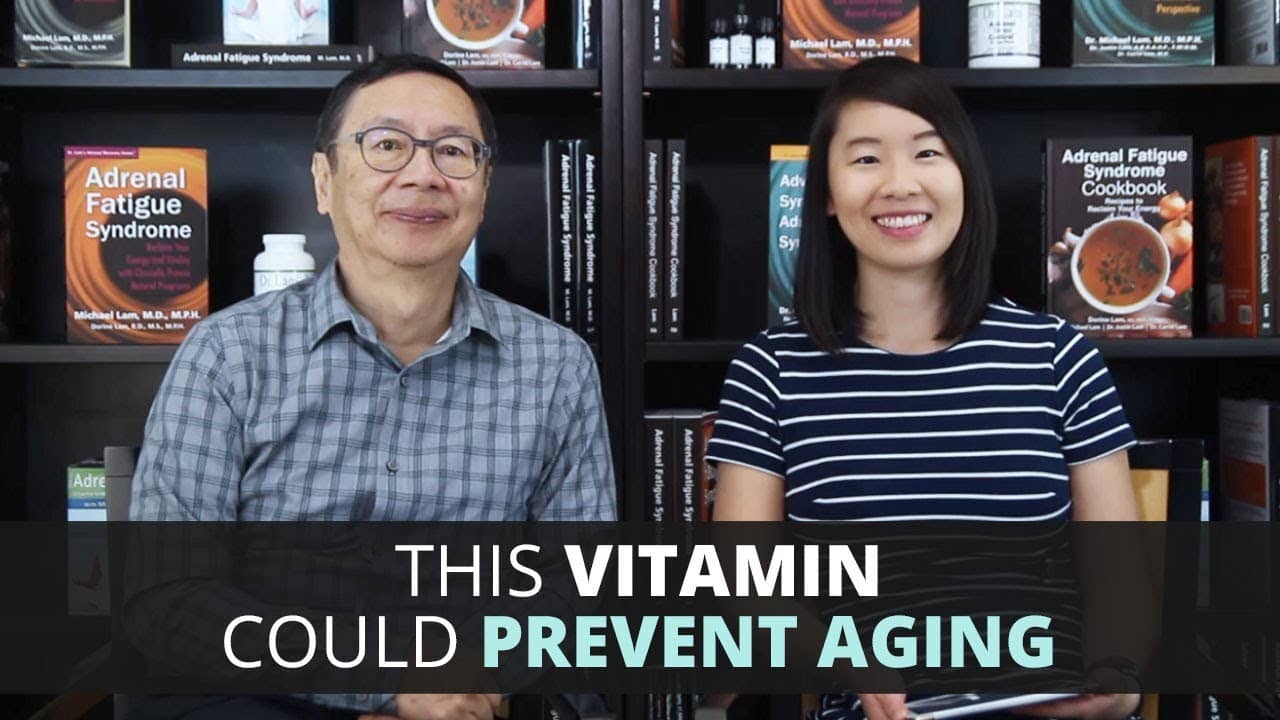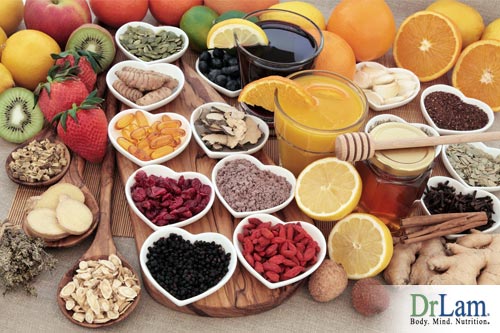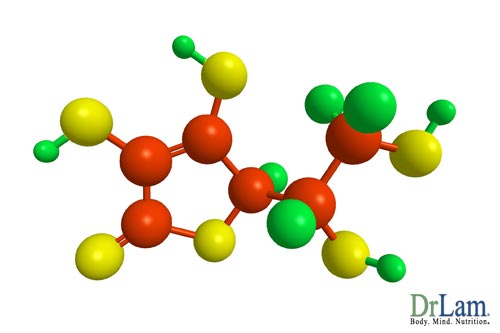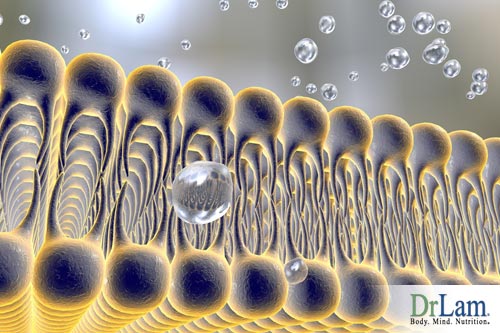
 Vitamin C sources are gaining more attention every day for their ability to alleviate the effects of chronic age-related problems. But the level of vitamin C in the blood is tightly controlled by the body, making it hard to achieve ideal levels, even with extensive oral supplement use. This control emerges from three fundamental mechanisms: control of absorption, control of discharge, and control of vitamin C degradation in the tissues.
Vitamin C sources are gaining more attention every day for their ability to alleviate the effects of chronic age-related problems. But the level of vitamin C in the blood is tightly controlled by the body, making it hard to achieve ideal levels, even with extensive oral supplement use. This control emerges from three fundamental mechanisms: control of absorption, control of discharge, and control of vitamin C degradation in the tissues.
Upgrading a few of these mechanisms might permit us to push vitamin C blood levels higher than was thought possible before. This may also provide higher efficiency from vitamin C sources. The supplements piperine and dihydro quercetin, acting through various pathways, offer possible means of achieving these higher levels: piperine for optimizing vitamin C uptake and dihydroquercetin for maintaining its movement. Also, upgraded bioavailability is alluring in light of vitamin C’s numerous positive properties. Research studies show that the best possible dose of vitamin C supplementation can decrease cardiovascular problems, reduce the risk of tumors, moderate diabetes issues, help immune function, enhance lung capacity, and even forestall bone loss in osteoporosis. Envision the advantages that even a small increase in the vitamin’s serum profile could offer! Vitamin C, otherwise called L-ascorbic acid, is a water-soluble vitamin that is naturally present in some foods, added to others, and accessible as a dietary supplement. Unlike most other animals, humans cannot generate vitamin C endogenously, so making sure you have adequate external vitamin C sources is key.
 Vitamin C is required for the biosynthesis of collagen, L-carnitine, and certain neurotransmitters, and is a necessary component of protein digestion. Collagen is a vital part of connective tissues, which assumes a fundamental role in wound healing. Vitamin C is additionally a vital physiological antioxidant and has been seen to recover different antioxidants inside the body, including alpha-tocopherol (vitamin E). Current research is trying to determine if vitamin C’s effects in restricting the harmful impact of free radicals through its antioxidant action may improve the outcomes of specific tumors, cardiovascular problems, and infections in which oxidative stress is a causal component. Notwithstanding its biosynthetic and antioxidant abilities, vitamin C bolsters immune capacity and enhances the absorption of non-heme iron, the type of iron present in plant-based foods. Deficiency in vitamin C consumption causes scurvy with such symptoms as fatigue, connective tissue weakness, and increased capillary fragility.
Vitamin C is required for the biosynthesis of collagen, L-carnitine, and certain neurotransmitters, and is a necessary component of protein digestion. Collagen is a vital part of connective tissues, which assumes a fundamental role in wound healing. Vitamin C is additionally a vital physiological antioxidant and has been seen to recover different antioxidants inside the body, including alpha-tocopherol (vitamin E). Current research is trying to determine if vitamin C’s effects in restricting the harmful impact of free radicals through its antioxidant action may improve the outcomes of specific tumors, cardiovascular problems, and infections in which oxidative stress is a causal component. Notwithstanding its biosynthetic and antioxidant abilities, vitamin C bolsters immune capacity and enhances the absorption of non-heme iron, the type of iron present in plant-based foods. Deficiency in vitamin C consumption causes scurvy with such symptoms as fatigue, connective tissue weakness, and increased capillary fragility.
The intestinal absorption of vitamin C is managed by one particular active transporter, while the action of a second different transport protein helps cell uptake. In vitro research studies found that oxidized vitamin C, or dehydroascorbic acid, enters cells by means of some facilitated glucose transporters and is then reduced inside the cell to become ascorbic acid. The physiologic significance of dehydroascorbic acid uptake and its effect on vitamin C economy is obscure. Oral vitamin C sources produce tissue and plasma concentrations that the body firmly controls. Around 70%–90% of vitamin C is assimilated at a moderate rate of 30–180 mg/day. On the other hand, at doses above 1 g/day, absorption tumbles to around 50%, and ingested ascorbic acid that was not metabolized is discharged through urine. Results from pharmacokinetic studies demonstrate that oral doses of 1.25 g/day of ascorbic acid produce mean peak plasma vitamin C of 135 µmol/L, which is about twice as high as consumption levels of 200–300 mg/day, and pharmacokinetic modeling predicts that even doses as high as 3 g ascorbic acid taken in 4-hour intervals would create peak plasma concentrations of just 220 µmol/L.
 The aggregate body amount of vitamin C ranges from 300 mg (at near scurvy) to around 2 g. Elevated amounts of vitamin C are maintained in cells and tissues and are most noteworthy in leukocytes (white platelets), the eyes, adrenal glands, pituitary gland, and cerebrum. In general, low levels of vitamin C are found in extracellular liquids, for example, plasma, red blood cells, and saliva.
The aggregate body amount of vitamin C ranges from 300 mg (at near scurvy) to around 2 g. Elevated amounts of vitamin C are maintained in cells and tissues and are most noteworthy in leukocytes (white platelets), the eyes, adrenal glands, pituitary gland, and cerebrum. In general, low levels of vitamin C are found in extracellular liquids, for example, plasma, red blood cells, and saliva.
Ester-C® contains mostly calcium ascorbate and additionally contains the vitamin C metabolites dehydroascorbic acid (oxidized ascorbic acid), calcium threonate, and small amounts of xylonate and lyxonate. Makers tell us that the metabolites, particularly threonate, expand the bioavailability of vitamin C sources in this product. A human study demonstrated the expanded bioavailability of vitamin C in Ester-C®, and an investigation of vitamin C bioavailability in a group of ten people found no contrast between Ester-C® and economically accessible ascorbic acid tablets concerning the absorption and urinary discharge of vitamin C. Ester-C® should not be confused with ascorbyl palmitate, which is advertised with the name “vitamin C ester.”
One form of vitamin C is known as ascorbic acid. It is a white, naturally occurring compound with antioxidant properties. It dissolves well in water and has a slightly acidic taste. It was initially called L-hexuronic acid but when found to have vitamin C action in animals, the recommendation was made to rename it. The new name, ascorbic acid, is derived from “a-” (signifying “no”) and “scorbutus” (scurvy), which is an infection caused by a lack of vitamin C and vitamin c sources.
 The advantages of vitamin C are well understood. But what many people don't know is that high doses of vitamin C can cause intestinal discomfort. This condition can be avoided by taking high-dose vitamin C in a liposomal structure. Liposomal vitamin C is an option for those without access to infusions and IV (intravenous dribble). It might actually be easier than these options because liposomal vitamin C is completely assimilated, and since it is taken orally, it can be used every day and even a few times each day. Daily administration of injections and IV are highly impractical and carry their own set of risks.
The advantages of vitamin C are well understood. But what many people don't know is that high doses of vitamin C can cause intestinal discomfort. This condition can be avoided by taking high-dose vitamin C in a liposomal structure. Liposomal vitamin C is an option for those without access to infusions and IV (intravenous dribble). It might actually be easier than these options because liposomal vitamin C is completely assimilated, and since it is taken orally, it can be used every day and even a few times each day. Daily administration of injections and IV are highly impractical and carry their own set of risks.
Certain people respond to vitamin C sources with intestinal issues, including diarrhea. Indeed, even people with a high resistance to vitamin C will after continued high doses encounter many of the same issues. High vitamin C doses are typically endorsed by specialists and other medicinal services experts, and because of the delivery method, it often must be administered in a clinical setting. The full absorption of vitamin C in liposomal form is a viable approach to abstain from sticking needles.
Vitamin C liposomes are encapsulated in an exceptionally novel way. Liposomes are minute spheres of fat the width of a solitary strand of hair. These infinitesimal fat particles are produced using phospholipids and contain a supplement as a cargo load within. These phospholipids are the same as those in egg yolk. The liposomes are dissolved when they enter the human cell since they have an external layer that is produced using the same phospholipids as the cell membrane. The liposome and the cell essentially blend together and consolidate when they touch one another. The substance of the two circles will likewise mix together, and in this ingenious way, the vitamin C in the liposome is conveyed into the cell.
Liposomal absorption is altogether different from intestinal absorption. Most supplements and medications are particles that are too large for passive consumption. The most common method to boost nutrient absorption is to separate the nutritional molecules to a size where they can slip between the stomach and intestinal cell membranes and enter the circulation. The liver and different organs then recollect the molecules. Liposomal vitamin C absorption is altogether different because it specifically enters the cell. The fat layer of the liposome shields the vitamin C from coming into direct contact with the intestine and stomach. This security keeps the intestinal symptoms of ascorbic acid (vitamin C) to a minimum.
Liposomes are generally used for molecules and supplements that are extremely hard to assimilate, with another example being liposomal glutathione. In any case, for vitamin C, the liposomes shield the person from intestinal uneasiness and permit the supplementation of clinically applicable doses.
 Mineral salts of ascorbic acid (mineral ascorbates) are less acidic and in this manner considered buffered. Thus, mineral ascorbates are regularly prescribed to individuals who experience gastrointestinal issues with plain ascorbic acid. At this point, there is insufficient scientific research to bolster or disprove the case that mineral ascorbates are less aggravating to the gastrointestinal tract. When mineral salts of ascorbic acid are taken, both the ascorbic acid and the mineral are assimilated, so it is essential to consider the mineral dose along with the ascorbic acid when taking high doses of mineral ascorbates. Mineral ascorbates are available in the following forms:
Mineral salts of ascorbic acid (mineral ascorbates) are less acidic and in this manner considered buffered. Thus, mineral ascorbates are regularly prescribed to individuals who experience gastrointestinal issues with plain ascorbic acid. At this point, there is insufficient scientific research to bolster or disprove the case that mineral ascorbates are less aggravating to the gastrointestinal tract. When mineral salts of ascorbic acid are taken, both the ascorbic acid and the mineral are assimilated, so it is essential to consider the mineral dose along with the ascorbic acid when taking high doses of mineral ascorbates. Mineral ascorbates are available in the following forms:
Erythorbic acid is an isomer of ascorbic acid. Isomers are molecules that have the same structure and quantity of particles but distinct molecular arrangements. These structural differences between isomers create nuances in biochemical action. Erythorbic acid is used in the U.S. as an antioxidant food additive. It has been determined that more than 200 mg of erythorbic acid per capita is incorporated every day into the U.S. food framework.
Bioflavonoids, powerful phytochemicals, are crucial for you to maximize the absorption of the Vitamin C you are intaking. It’s remarkable, that foods which happen to be naturally high in vitamin C, such as broccoli, spinach, red onions, hot peppers, and kale, are also high in bioflavonoids. At the end of the day, intaking your vitamins and minerals from natural and whole foods is a good way to get vitamin C as well. Food based vitamin C is available in supplement form too.
Adrenal Fatigue causes an insufficiency in hormones as well as a deficiency in a significant portion of the vitamins, minerals, and crucial compounds that our bodies need to work effectively. Your blood tests may show no signs of deficiency, but fatigue and low energy levels often indicate otherwise. Similar to hormone levels, you need the ideal level of these vitamins and minerals, not just the base level.
 This intense antioxidant vitamin is critical in the production of cortisol in the adrenal glands. So alongside the other medical advantages it conveys (boosting your immune framework, defending against free radicals), vitamin C is additionally a fundamental building block for the recuperation of your adrenal glands. You can begin with a moderate dose of vitamin C and slowly increase this step-by-step over the long haul. Cushioned or liposomal vitamin C is by and large the best delivery system, and it ought to be blended with bioflavonoids, as it frequently is in nature. The highest concentration of vitamin C sources in the body is stored in the adrenal glands.
This intense antioxidant vitamin is critical in the production of cortisol in the adrenal glands. So alongside the other medical advantages it conveys (boosting your immune framework, defending against free radicals), vitamin C is additionally a fundamental building block for the recuperation of your adrenal glands. You can begin with a moderate dose of vitamin C and slowly increase this step-by-step over the long haul. Cushioned or liposomal vitamin C is by and large the best delivery system, and it ought to be blended with bioflavonoids, as it frequently is in nature. The highest concentration of vitamin C sources in the body is stored in the adrenal glands.
In addition to cortisol, vitamin C is used by the adrenal glands in the generation of the majority of adrenal hormones. When you are confronted with an unpleasant circumstance, your vitamin C is quickly used up in the production of cortisol and related stress reaction hormones. In Adrenal Fatigue, your adrenal glands sound an alarm when they don’t have enough vitamin C accessible and, paradoxically, they discharge MORE cortisol, which explains your quick anxiety as well as drawing out high levels of cortisol, which, in turn, wreaks destruction on your glucose, blood pressure, and adds to the elevated accumulation of belly fat.
© Copyright 2016 Michael Lam, M.D. All Rights Reserved.

